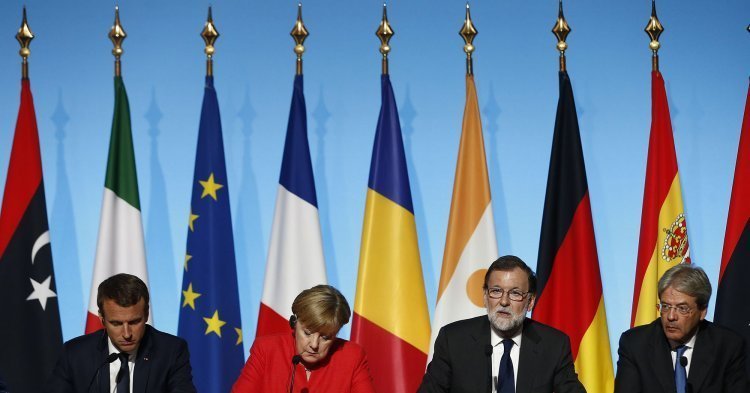With the Declaration of Rome following the European summit of 27th March 2017, celebrating the 60th anniversary of the founding treaty, the member states have declared their ambition and have provided food for thought to relaunch the European construction. The Heads of State and government affirm that they will act together, but “if necessary, at different paces and different intensity, following the same direction, as [they] did in the past, in accordance with the treaties and welcoming those willing to join [them] later”. Without mentioning it, the text glorifies the idea of a differentiated integration, which has animated many reflections since then.
“Europe is already multi-speed!”
A “multi-speed” Europe divides the governments: this scenario, desired by Germany and France, collides with the diverging positions of Eastern countries, Poland ahead. President Macron revealed his project of Europe’s refoundation, based rightly and mostly on this idea. “Europe is already multi-speed, so let’s not be scared of saying it or doing it! Let’s pursue this differentiation.” This project has been running since the 90’s, in particular with the creation of the Eurozone, composed of 19 countries sharing the single currency, or with the Schengen area. Today, the European refoundation is essential in many fields in which the need of integration is growing: this includes, amongts others, we can quote the Europe of Defence, Euro, tax harmonisation, social Europe, or democracy.
The eternal search for consensus at 28
The issue of a differentiated integration is even more acute as the number of member states grows. It appears indeed more difficult to get a consensus on the future of European construction at 28 member states in many areas. A “multi-speed” Europe challenges the objective to allow those who want to deepen integration to do it, without being limited by the most unwilling. It refers to the idea of a differentiated integration, according to which the pursue of common objectives is led by a group of EU countries willing and able to progress. This philosophy would imply of course the idea that other members will later join this additional step in integration. It would allow to put an end to the immobilism regarding institutional reforms since the rejection of the constitutional treaty, and to avoid the difficulties to agree on central questions. The success of the European construction indeed leans on its constantly maintained dynamism, which has been unfortunately neglected for ten years.
Multi-speed Europe over the short term
“Multi-speed” Europe can be a solution on condition that all member states are willing to join the group of pioneering member states in the end. This point is primordial. This possibility was already opened by the Lisbon Treaty, through enhanced cooperations, and was used several times, for instance in the area of patents or civil law, or more recently with the establishment of a European public prosecutor’s office (which should be operational in 2020). The usefulness of this process is revealed by the instauration of a unitary European patent, which was negotiated during 30 years to finally result in an enhanced cooperation, for lack of consensus-building. What a waste of time!
If all Member states affirm the necessity of deepening European integration, considered in a global perspective, the priorities regarding the monetary union, the tax system, defence, social policy, the fight against terrorism or border protection are areas within only a small core of states can (and is willing to) progress together, despite the various risks of establishing “variable geometry” rights for the European citizens, and of putting European cohesion at risk. It is a question of acting to avoid these pitfalls and above all of putting an end to European immobilism and to the concern of many Europeans: what is Europe doing and what is it standing for?
A pragmatic view on the political context forces to consider these elements through the scenario of a “multi-speed” Europe. It is not without risks, but it can also be considered as an alternative to the great difficulty of decision-making in an intergovernmental system where individual national interests and nationalisms still prevail too often. Let’s not forget the motto of the European Union: “United in diversity”. Let’s apply this diversity while reaffirming the common future of our nations in this promising European construction.




Follow the comments: |
|
